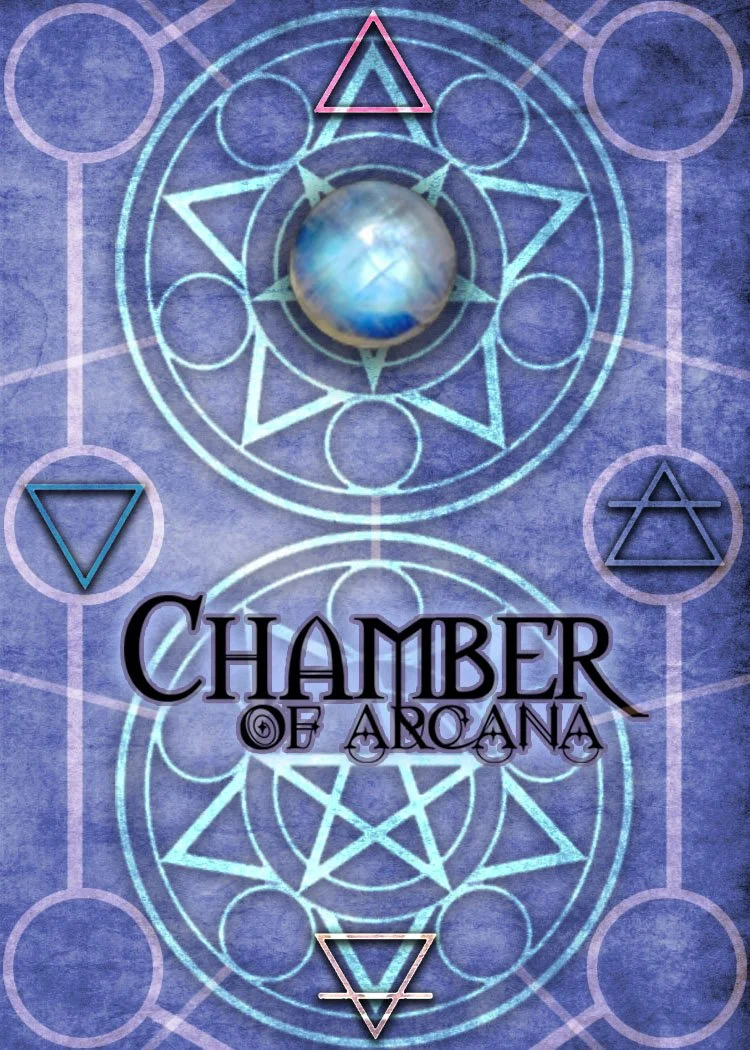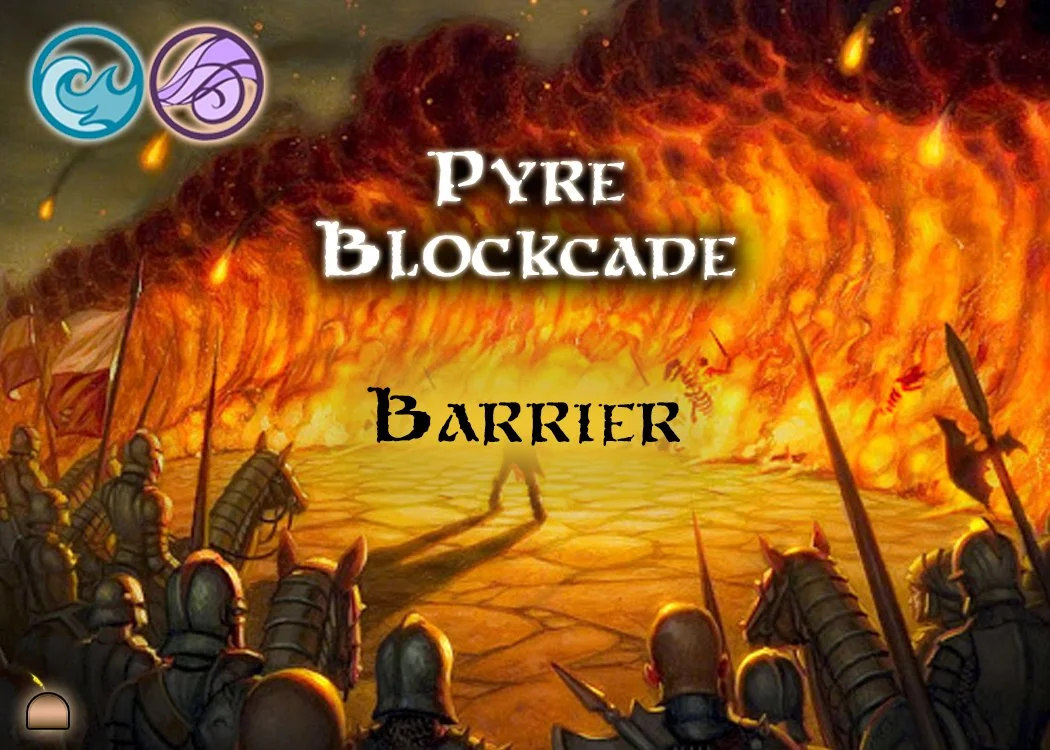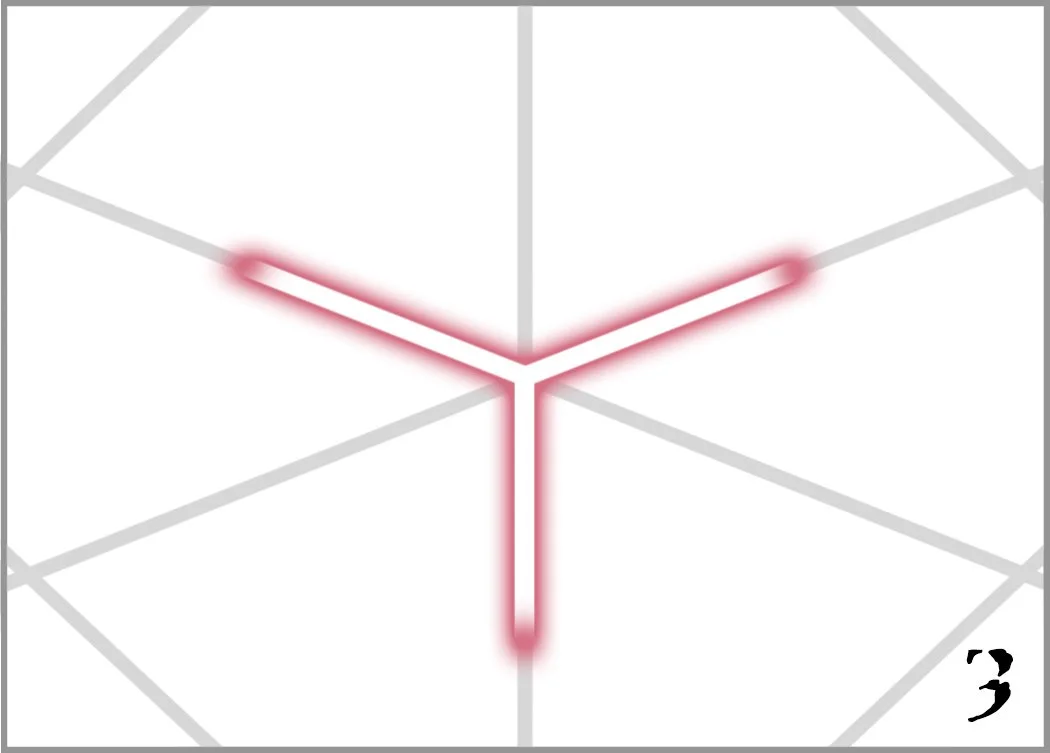
Chamber of Arcana
A brand new innovative take on the TCG genre..
Cast powerful relics within your chamber to win the tides of battle against other sorcerers of arcana!
The Innovations Chamber of Arcana brings to the TCG Genre:
-
With Relics being multi-use cards, players have a variety of options at their disposal that allows for exciting turns where interesting actions are actually being carried out instead of a dead turn due to lack of resources or noteworthy cards to play. The fact that any card can be played to be used for resources thus allowing a player to never get resource screwed, or Creatures to continue the fun of combat, or attachments to help increase their strength to get out of a pinch, means there is always something that can be done, countered or set up for the next turn.
-
Players will have fun building and executing a plethora of strategies by crafting decks utilizing the 3 main archetypes built into the foundation of Chamber. Different combinations will lead to hundreds of different and unique decks with two never being the same. Creature types, Relic types and the 4 elements are the 3 archetype pillars of Chamber.
-
Within Chamber, there are many game altering mechanics that exist within the cards. A few examples are Creatures or Incantations that can summon "Barriers" that are placed standing up, adding to the immersion of combat, or "Channel Pathways" that reroute and control the flow and direction of attacks on the field. Realm cards once summoned change the entire landscape of the battlefield, boosting Creature's that share the same affinity for that Realm's natural element but also add a rule that shakes up the game play for both players. And lastly, Legends which are the avatars players take up that encompass powerful abilities to call upon for a certain cost.
The power of relics in your hand..
Chamber of Arcana has tons of different themed Relic decks, each one geared towards a certain mechanic. Create custom decks using relic cards from those sets to make new unique combos and strategies and ways of playing! Premade Relic decks will be crafted and sold to either play with or dismantle to rebuild your own decks with. Each card has a specific type of Relic icon at the bottom left representing which relic archetype that card operates within. The Incantations, Battle Stats and Status Attachments are the key aspects that alter due to the relic archetype.
For example, the Amethyst Relic cards are geared towards poisoning enemy Creatures, so most Incantations would revolve around poisoning, or gaining life back from poisoned Creatures and the Status Attachments would also include perks such as Infect and Lifelink.
Chamber is a 1v1 trading card game where players battle on the field with magical Relics from their hand that transform into a multitude of variations that can win them the battle once they touch the field. These Relic cards are “multi-use” cards, allowing players to strategize with how they want to play each card at any given moment. The first player to capture 3 enemy creatures wins the game.
Relics can be summoned as 3 different permanents on the field:
Creatures- Creatures are combat ready monstrosities that players use to battle each other, with the goal of capturing 3 of their opponent’s Creatures. They each have a capture cost, battle stats (attack, defense, range, and health), and an archetype that shares two elemental affinities.
Harvesters- Harvesters sit on the side of the board in a specific slot outside of combat. Every turn they harness you “Aether”, (Chamber’s resource) showcased on the corners of the card. The top left corner is the active corner that grants you Aether. At the start of every turn, rotate each Harvester counterclockwise and use the next corner now located in the top left. After 4 rotations, it expires and goes into your graveyard. Players can have up to 2 Harvesters in play at a time.
Attachments- Attachments get summoned and equipped onto a Creature in play. There are 3 types of Attachments: Battle Bonuses, Incantations and Status Attachments. Battle Bonuses get equipped to the left of a Creature and enhance a Creature’s battle stats for combat. Incantations get equipped at the bottom and allow a Creature to be able to cast that specific spell for combat and Status Attachments get equipped to the right and offer a slew of varying offerings depending on the type of Status Attachment and if the requirement that card needs is met.
Different Types of Cards in Chamber
Below you will see different types of cards you will come across in the game of Chamber. The main card type that takes up a majority of a player’s deck are the Relic Cards. Every other card type are minimal to the playing experience and may not even exist in every player’s deck.
Relic Cards
-
If players summon a Relic to the field as a Creature, they place it in one of the 3 Creature slots on the board. It costs 2 Aether to summon. They then look at the top of the card where the battle stats are and use those for combat. Creatures all have a Capture Cost which is the large number in the middle of the card. Each Creature also has 2 elements it shares an affinity for. Last but not least, Creature have a Level they need to reach in order to prestige or "upgrade" which attachments will be needed for by stacking numbers up to the right that will meet or be higher than the Creature's Level number. Once prestiged, they will receive all the bonuses that comes with each card.
No other parts of the card do players look at.
-
Summoning a Harvester costs nothing and a max of 2 Harvesters can be out at the same time for each player. Harvesters get placed to the right in the Harvester slots. Each turn (including the turn they get summoned) grant the player Aether. The amount is dictated by the number located in the top left corner. In the beginning of each turn, players rotate each Harvester counterclockwise and then exhaust that new left corner for Aether. After 4 turns that Harvester expires and gets discarded.
-
Attachments get equipped to Creatures in play and each cost 2 Aether no matter the attachment. Relics can be attached to the left known as Battle Bonuses. Players only look at the new buff stats on the attachment cards and NOT the section directly on the Creature card itself. Same thing with Incantations, which get placed at the bottom. Status Attachments get equipped to the right and work towards upgrading a Creature.
Legend Cards
-
Each Legend has a different Timed Ability which are pretty powerful spells that once used cannot be used until "X" amount of turns have gone by. This is called a cool down. The amount of turns is dictated by the number on the dice symbol next to the ability. Players place a D6 die on top of that spot matching the number and each turn, they lower the pip amount until its done.
-
Dismantling is another great ability that Legends have that allows players to discard "X" amount of cards from their hand in order to activate one of the 3 tiers of abilities listed on the top left of a Legend card. The first tier only costs 1 card to be discarded, then the 2nd one requires 2 cards to be discarded and the 3rd ability requires 3 cards discarded. Each tier can only be used once per game, and a player can use the Dismantle action only once per turn.
-
Affinity Search allows a player to discard two Relic cards from their hand to search for any 1 card in their deck that shares the same elemental affinity as their Legend in play. They then place that newly found card into their hand. This helps pull a great card from the deck a player may desperately need to turn the tides.
-
Deconstructing is a mechanic that allows players to swap out "X" amount of already equipped attachments on their Creatures with new attachments from their hands for the cost of their Legend's Life Points (number next to the heart symbol). This is an effective way to keep your Creatures current and up to par with their battle stats through out the game, but it comes at a hefty cost, because if your Legend dies, you loose the game. Thats where the Slumber mechanic comes into play. By tapping your Legend which puts them to sleep rendering them useless and inactive, they heal 1 Health Point per turn while asleep. The cool down of Timed Abilities are paused during Slumber.
Realm Cards
-
Realm Cards have 4 sides to them with text information. Each side provides a bonus and if that side faces the playing board of Creatures, thats the bonus that is active and effecting all Creatures in play. Realm cards cost nothing to play and will knock out any Realm already in play, but they cost the summoner 2 Aether to rotate "Shift" it to a certain side. This allows the player to alternate the power it grants to the Creatures in play.
-
Each Realm Card has a natural elemental type. This type will boost all Creatures in play that share an affinity with that same element. Each element boosts a different stat. They all receive a +1 buff.
Fire boosts attack, Water boosts health, Air boosts range and Earth boosts shields.
-
Basic Realms are what is mentioned previously above. Players shift them to different sides for different powers and offer an elemental boost.
Fractured Realms are dual effect Realms where each side effects players differently, like “+1 attack to all Creatures on this side of the board, and -1 health to all Creatures on this side”.
Fated Realms shift automatically in the beginning of each turn for no cost starting with the weakest side (1) and ending on the strongest side (4) after 4 rotations. Each side effects both players however these are more like Events than powers it provides. Once all 4 sides are used it collapses and gets removed.
Cauldrons are not Realms but get placed in the same slot and allow both players to store Incantations to cook on the 4 sides of the card. One Incantation per side. Players place D6 dice on each side starting at the number that side says. These are cool downs and once its ready players can cast that Incantation for free.
Shards
-
The first choice you have when using a Shard card is the ability to use it instantly as a one time effect to gain a larger amount of Aether. The card example above says to gain “4 Aether” once if you choose to do so. If so, you discard the card afterwards.
-
Shard cards allow you to Cultivate a Realm card. This is the only way to do so. Cultivating a Realm will make that Realm card start producing Aether each turn. The amount of Aether that the Realm produces is whatever amount the Shard card that was used to Cultivate says. The card example above says “3 Aether per turn”. Cultivating is the second choice players have when using a Shard card.
-
Cultivating a Realm is all good and dandy but it doesn’t do you any good if you can’t collect the aether the Realm is producing. This is where the third choice when using a Shard card comes in. Playing a Shard card and choosing the third option allows you to Harvest aether from a cultivated Realm. Players must be careful though when cultivating a Realm because any player can use a Shard card to harvest a Realm, so if you plan on building up a large sum of aether to collect, try not to get too greedy or else your opponent may snatch it up from you before you do.
Shadow Clones
-
Shadow Clones get summoned on the field propped up directly in front of the Creature that summoned it since a Shadow Clone is an exact copy of that Creature when it comes to Creature Type and Elemental Affinities.
-
Even though a Shadow Clone is a copy of the Creature that summoned it, these Shadow Clones have their own Battle Stats located on top that differ from their original Creature creator. The only thing a Shadow Clone copies from the original Creature is the elemental affinities and the Creature Type.
An opponent’s Creature would normally need to defeat a Shadow Clone first in order to do damage to the original Creature behind it unless they have a perk that lets them bypass the Shadow Clone.
Once a Shadow Clone gets destroyed it gets removed from field and placed out of game. It does not go into your discard pile.
Back of the Cards
-
The coloration of the back of the card will let you know what Relic Type that Relic card is, along with the Relic stone symbol. Since Relic cards can behave as anything the player wants it to be during the game (Creature, Harvester or Attachment), it doesn’t matter if both players know what Relic Type card is up next to be drawn from a player’s pile since there are many paths a player can choose to play that card.
-
In Chamber of Arcana, every Relic card has a Relic Type and every Relic Type does something slightly different. When you see an Amethyst Relic card, you know that its based in Poisoning, so any Amethyst Relic card has some sort of function that is involved with poisoning to a degree. Relic Types allow you to construct a themed deck that combos well off each card giving you efficient results. You can even combine certain Relic Types to create unique decks. Relic Types are one of the Archetype pillars of Chamber.
Barriers
-
Barriers are walls that players erect in front of their Creatures for protection. Each Barrier has a weakness condition that must be met in order or it to be destroyed.
Barriers are ranked either Silver (Common), Gold (Uncommon) or Mythic (Rare). Only Mythic Barriers come with an additional power called "Barrier Boost". This special power is a perk that enhances it's barrier when the specific condition is met on the barrier card. Enhancements range from all types of buffs.
-
Barriers: The basic type of barrier. It simply blocks incoming attacks.
Reflection Barriers: Reflects incoming attacks and sends it back to the attacking Creature.
Conversion Barriers: These barriers take incoming attack damage and converts it into either Health or Aether for the defending Creature.
Channel Pathways
-
Channel Pathways restrict the flow of attacks from the opponent’s Creatures. These cards get placed in the middle of the board where the light grey lines connect with the lines on the board. The cost is the number listed at the bottom right. Blue pathways effect the caster’s opponent, where Red pathways effect both player’s Creatures in play.
These cards do not get placed in a deck, and instead exist outside of the game. When a player summons a Channel Pathway, they grab one that they can afford with their Aether.
-
Blue pathways effect the caster’s opponent, where as Red pathways effect both player’s Creatures in play.
For example, if a Blue Pathway is out in play, the caster's Creatures do not have to listen to the channels and can attack whatever Creature they want and can within their range. However, the opponent's Creatures must follow the channels and can only attack an enemy Creature that is at the end of each channel.
Learn to play Chamber of Arcana
Click the “Rulebook” button below to learn how to play Chamber of Arcana. Everything from the phases of each turn, and how combat damage is dealt and resolved is mentioned in the Rulebook.













